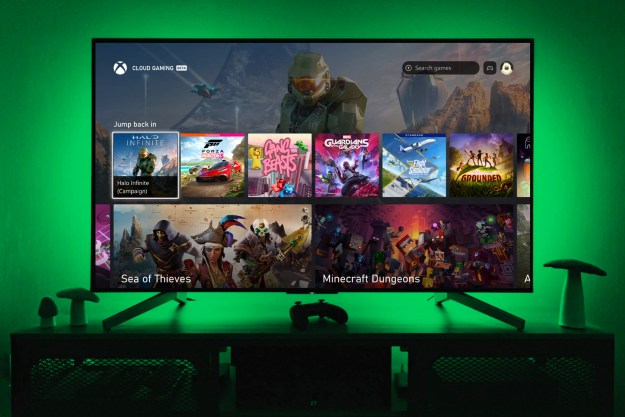Of all the games I tried at GDC, Sword Coast Legends got me the most excited. Coming from a studio of Western role-playing game veterans, Sword Coast Legends is the first game I’ve ever seen get Dungeons & Dragons-inspired multiplayer right. Neverwinter Nights, Microsoft’s forthcoming Fable Legends, and plenty others have tried, but none of them nail what makes Dungeons & Dragons work — collaboration.
I know people that have tried to be good Dungeon Masters and never quite grasped the nuance. It’s a tough balance. A good DM understands how players interact, and encourage relationships between the characters and the world. A great DM does all of that while understanding that a campaign with too much or too little challenge misses the point of growth and empowerment. D&D is about collaboration, about finding unique solutions to problems, and about adapting to new situations in unexpected ways.
Enter Sword Coast Legends.
I saw someone quickly create a new dungeon, fill it with traps and monsters, and, most crucially, modify all of that on the fly as he saw his players struggling. That’s the key. Most games that experiment with asymmetric play do it as part of a competitive experience. Sword Coast is far more interested in encouraging collaboration between people with a pseudo competitive backdrop.
In Sword Coast Legends, dungeon masters use a resource called threat to do anything of substance. They can use it to lock doors, lay traps, control monsters, etc. Threat can only be generated by hurting or hindering the players’ party; however, if the DM gets overzealous and starts killing off characters, then threat all but evaporates.
Instead, the DM is supposed to watch players closely and pull monsters back if it looks like one might fall. DMs can demote creatures to make them easier for the party to beat, or simply or wipe them away. It’s a system that directly incentivizes pushing the party to its limit, without making the experience frustrating. It makes being a great DM a skill that you can practice and hone – just like with real tabletop RPGs. Sword Coast Legends understands the dynamic relationship between Dungeon Masters and their party.

When I spoke to the room of developers, all collaborating on the new project, they said the hope was that some players would become exclusive DMs. “People can run through the game by themselves without needing anyone else. But we hope that those that want to play with a DM or with a party can do that whenever they want. Players are rated after every encounter, and we’re implementing an online system, so you’ll be able to find good DMs.”
Sword Coast Legends also has a campaign editor. Enterprising players can dig in and create their own game world, their own enemies, and craft a deep experience for players to experiment with. Unfortunately, I didn’t have a chance to look at that. “It’ll be ready soon,” the devs said. “Just not yet.”
I still have a few big reservations about Sword Coast. The DM experience is, as I’ve mentioned, fantastic, but the other half of that equation are the players. In my own D&D campaigns, many of the best and most memorable moments have been driven by player response to the DM. In one particularly tough encounter, we found ourselves completely surrounded by guards and soldiers. We each had a Wand of Summon Swarm our DM had provided earlier, and my friend got the clever idea to jump onto one of their soldier’s shoulders, plunge the wand into his throat and cast the spell causing the victim to explode.

Typically, the game’s rules don’t allow players to pull that kind of stunt. Summon Swarm can only be cast where there’s sufficient room for the swarm to spawn. In this case our DM thought it was creative enough and funny enough that not only did he let it happen, he said that all of the other guards were so horrified that they immediately broke ranks. That’s special, and that’s not something I think we’ll see for a while yet.
I’m still very much excited for Sword Coast – I think it’s closer than any game I’ve ever seen to tapping the spirit of tabletop RPGs. It’s important to understand, however, that computers are still very poor at adapting to unusual situations. Having the kind of broad player input you’d need to perfectly match old school RPGs and then model that all graphically in real time might never be possible. This is a start, and it seems like a great start, but I’m already eager to see the next step in bringing one of my favorite games to life in digital form.
Editors' Recommendations
- Nintendo’s next game is all about mastering NES classics
- Ahead of Dragon’s Dogma 2, you can get the first game for $5 right now
- If you can’t get enough Palworld, try these great games next
- Get an exclusive new look at Song of Nunu: A League of Legends Story
- Watch a full match of League of Legends fighting game Project L






